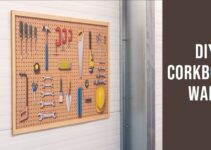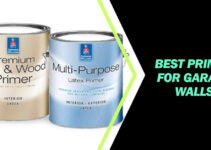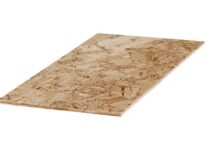Waterproofing Bottom of Garage Walls:
The bottom sections of garage walls are exceptionally prone to water infiltration due to their proximity to the ground and exposure to moisture from the surrounding soil. Without adequate waterproofing measures, water can easily penetrate into the garage, leading to various detrimental effects such as dampness, mold formation, and structural degradation.
Why Waterproofing is Necessary
Waterproofing is crucial for maintaining the integrity and functionality of garage walls. The bottom sections of garage walls are particularly susceptible to water infiltration due to their proximity to the ground and exposure to moisture from the surrounding soil. Without proper waterproofing measures in place, water can easily seep into the garage, leading to a host of issues.
Common Problems with Garage Walls
Moisture-related issues in garage walls manifest in various forms, including the appearance of efflorescence, characterized by white salt deposits on the surface. Additionally, peeling paint, musty odors, and the development of cracks or bulges due to water pressure are common problems associated with inadequate waterproofing
Assessing Water Leakage
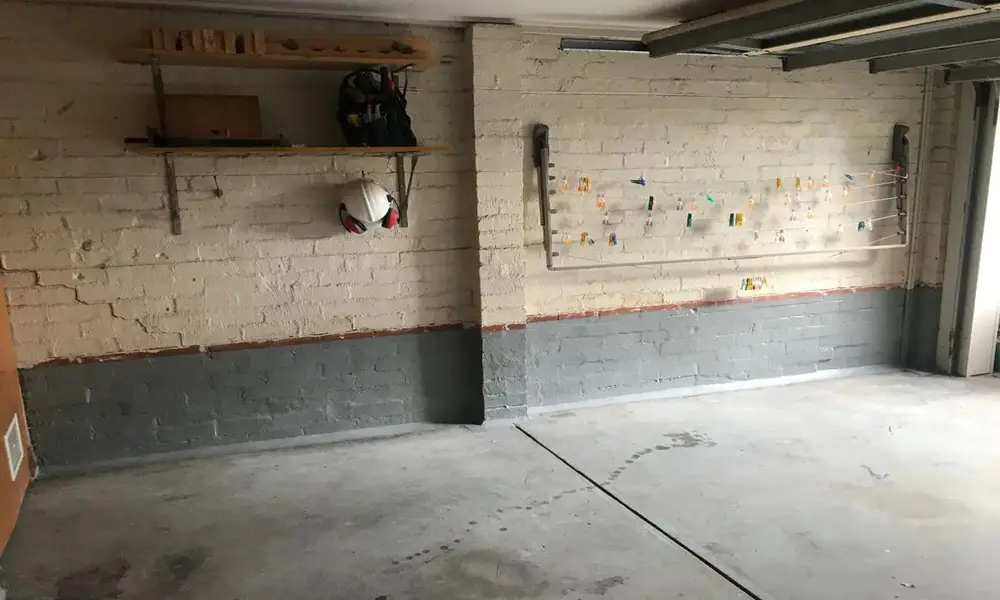
Signs of Water Leakage
To identify potential water leakage, it’s crucial to be vigilant for signs such as damp spots, discoloration, peeling paint or wallpaper, mold growth, or the presence of a musty odor within the garage. These indicators strongly suggest that water is finding its way into the structure.
Identifying the Source of Water
Determining the source of water infiltration is essential for selecting the appropriate waterproofing method. Possible sources may include improper drainage systems, cracks in the walls, or rising groundwater levels. Understanding the root cause enables targeted solutions for effective waterproofing.
Preparing for Waterproofing
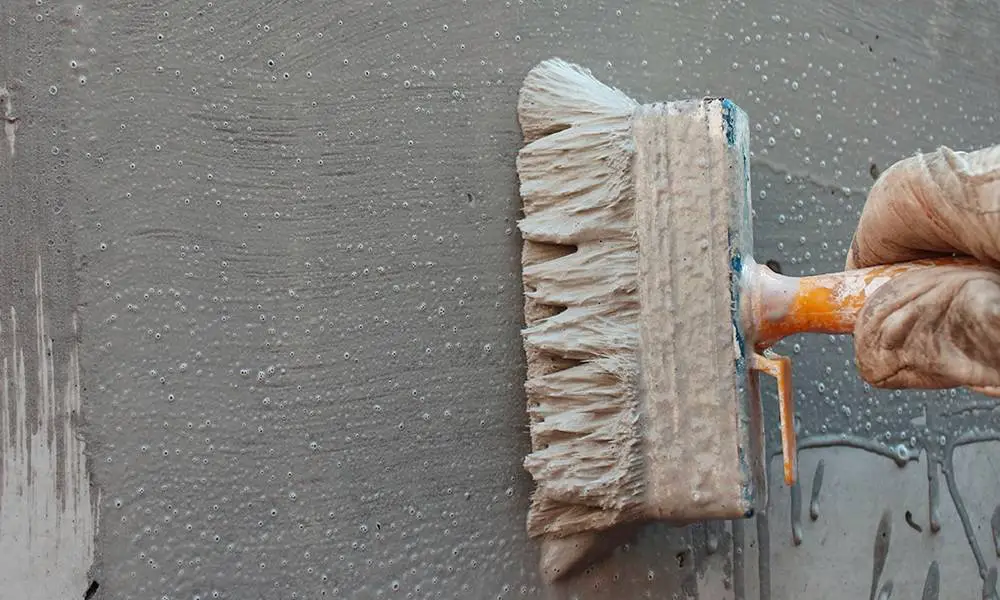
Clearing the Area
Before commencing the waterproofing process, it’s essential to clear the area around the base of the garage walls by removing any items or debris that may obstruct the work area.
Surface Preparation
Ensuring that the surface is thoroughly cleaned and free from dust or loose materials is vital for the success of the waterproofing application. A clean surface provides better adhesion for the waterproofing product.
Gathering Tools and Materials
Assemble all the necessary tools and materials required for the waterproofing project, including a pressure washer, stiff brush, appropriate waterproofing product, protective gear, and any additional supplies as per the manufacturer’s recommendations.
Waterproofing Steps
Step 1: Surface Cleaning
Begin the waterproofing process by meticulously cleaning the surface using a pressure washer and stiff brush to eliminate dirt, grime, and any existing coatings that may hinder proper adhesion of the waterproofing product.
Step 2: Patching Cracks and Holes
Inspect the garage walls thoroughly for any cracks or holes, and promptly patch them using a suitable filler or sealant to ensure a smooth and even surface before applying the waterproofing product.
Step 3: Applying Waterproofing Product
Follow the manufacturer’s instructions to apply the chosen waterproofing product evenly across the surface using a paint roller or brush. Pay special attention to corners and joints, ensuring thorough coverage for optimal protection against water intrusion.
Step 4: Multiple Coats Application
For enhanced protection, consider applying multiple coats of the waterproofing product as recommended by the manufacturer. Allow each coat to dry completely before applying the next layer to ensure maximum effectiveness.
Step 5: Sealing Corners and Joints
To prevent water seepage through vulnerable areas such as corners and joints, apply a waterproofing sealant or tape to create a tight seal and reinforce the protective barrier against moisture intrusion.
What are Some Common Waterproofing Products?
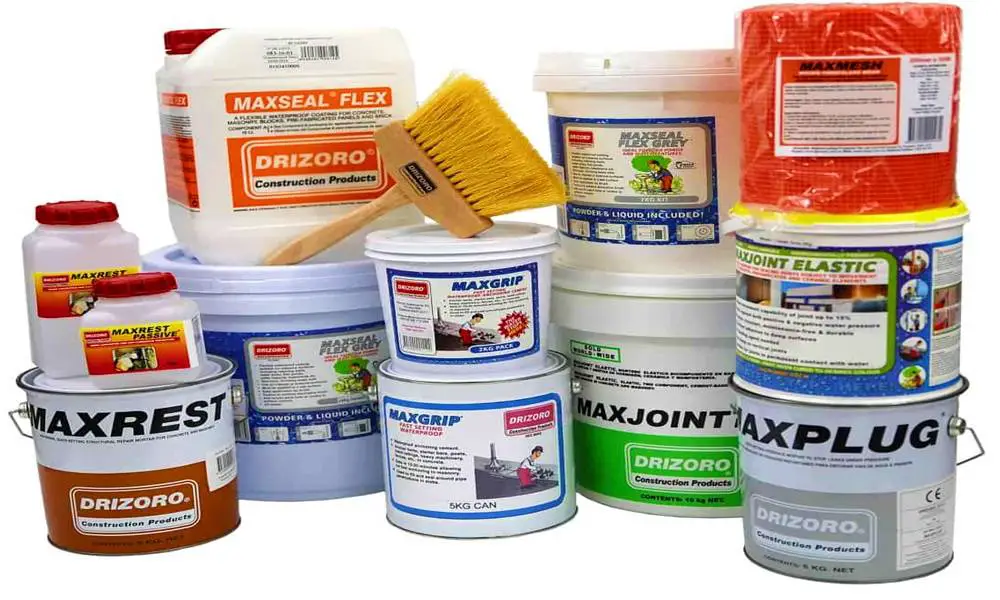
Waterproofing products play a vital role in preventing water penetration, which can lead to structural damage, mold growth, and other issues. Understanding the different types of waterproofing solutions available can help property owners make informed decisions about their waterproofing needs.
1. Waterproof Paint or Coating
Waterproof paints or coatings are popular choices for sealing surfaces such as concrete, masonry, or wood. These products contain special additives or compounds that create a barrier against moisture.
Applying waterproof paint is relatively straightforward, typically requiring a brush or roller. It’s commonly used on walls, basement floors, and garage walls to provide an additional layer of protection against water damage.
2. Silicone Sealants
Silicone sealants are known for their flexibility and durability, making them ideal for sealing gaps, joints, and cracks in various materials. They can accommodate movement, making them suitable for areas prone to expansion and contraction, such as around windows and doors.
Silicone sealants provide reliable waterproofing solutions and are often used in bathrooms, kitchens, and other high-moisture environments.
3. Bituminous Coatings
Bituminous coatings offer excellent waterproofing properties and are frequently used for roofs, foundations, and below-grade structures. These coatings, typically based on bitumen, provide a durable and long-lasting waterproofing solution. They can be applied with a brush or spray, forming a protective barrier against water intrusion.
4. Cementitious Waterproofing
Cementitious waterproofing compounds, when mixed with water, form a paste that can be applied to surfaces such as concrete, stucco, or brick. Once cured, this paste creates a waterproof layer, effectively preventing water from seeping through. Cementitious waterproofing is commonly used in areas where a rigid waterproofing solution is required.
5. Liquid Membranes
Liquid membranes are fluid-applied coatings that form a seamless and flexible membrane when cured. They are ideal for waterproofing roofs, balconies, and other horizontal surfaces.
Liquid membranes can be rolled or sprayed on, providing a hassle-free application process. Their flexibility allows them to withstand temperature fluctuations and structural movements.
6. Polyurethane Sealants
Polyurethane sealants offer versatility and excellent adhesion to various materials, making them suitable for joints, cracks, and gaps. They provide a high level of elasticity, allowing for movement without compromising waterproofing performance.
Polyurethane sealants are commonly used in both indoor and outdoor applications, providing durable and long-lasting protection against moisture intrusion.
Choosing the Right Waterproofing Product
When selecting a waterproofing product, it’s essential to consider factors such as the specific application, surface type, and environmental conditions. Each type of waterproofing product has its unique properties and advantages, so it’s crucial to choose the one that best suits your needs.
Additionally, following the manufacturer’s instructions for proper application and safety precautions is essential to ensure effective waterproofing.
Conclusion
Waterproofing bottom of a garage wall is an essential step in protecting your space from water damage. By following the outlined steps, selecting the right waterproofing method, and maintaining the system, you can ensure a dry and functional garage.
Remember to address water leakage promptly, prepare the surface thoroughly, and take necessary precautions to avoid common mistakes. With effective waterproofing, you can enjoy a durable garage that remains resilient against water infiltration.
FAQs
1. How often should I waterproof my garage walls?
It’s recommended to waterproof your garage walls every 3-5 years or as needed, depending on the condition of the walls and your local climate.
2. Can I apply waterproofing product myself, or do I need to hire a professional?
While it’s possible to apply waterproofing product yourself, hiring a professional ensures proper application and long-lasting results, especially for complex issues.
3. Is waterproofing necessary if my garage is above ground level?
Yes, waterproofing is still necessary as water can seep in through cracks, joints, or improper drainage systems, leading to potential damage and mold growth.
4. Can I paint over the waterproofing product for a more aesthetically pleasing finish?
Yes, many waterproofing products are paintable, allowing you to customize the appearance of your garage walls while maintaining protection against water damage.
5. Are there any eco-friendly waterproofing options available?
Yes, there are environmentally friendly waterproofing products available on the market that provide effective protection without harmful chemicals or additives.
